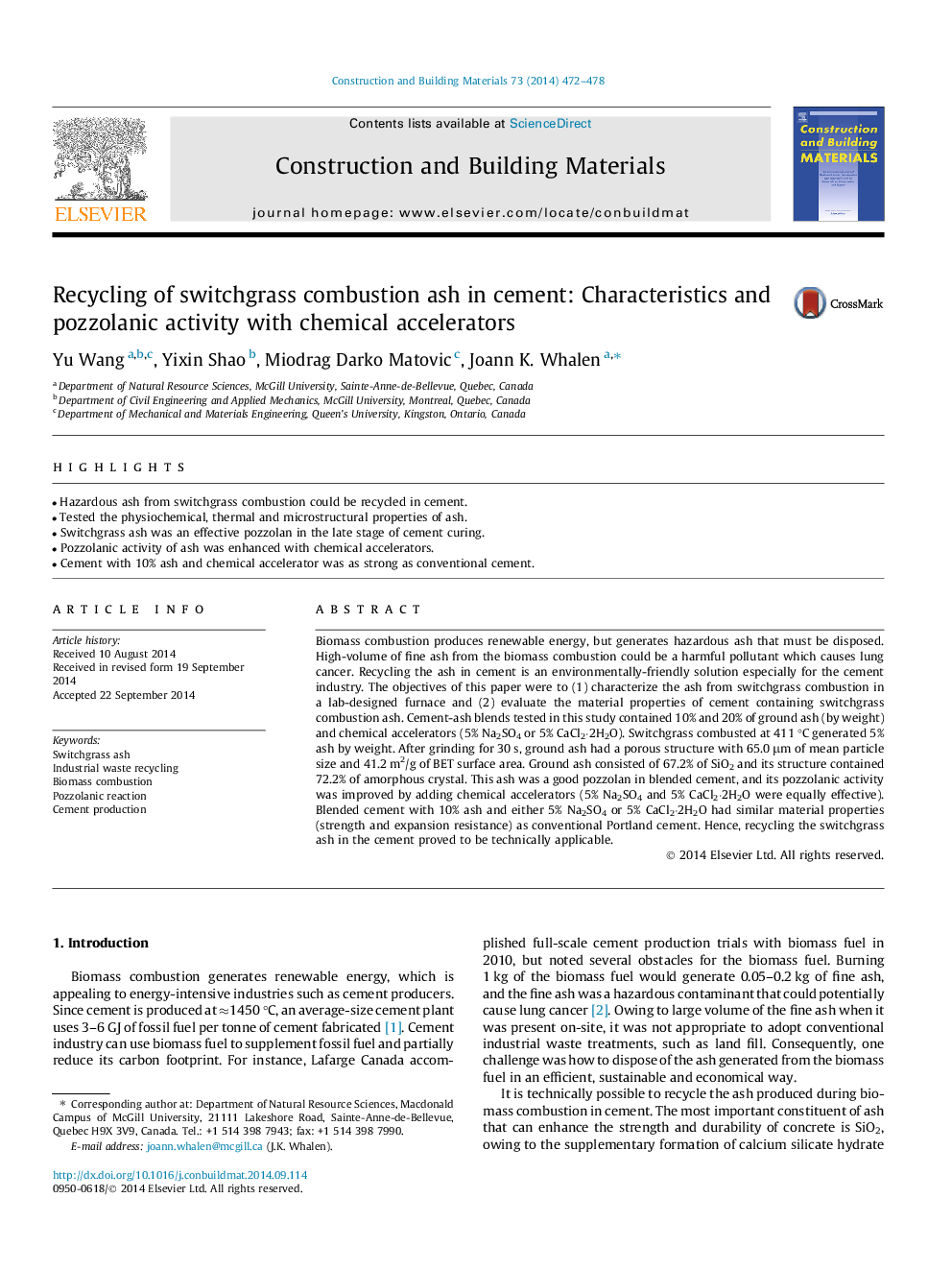| Article ID | Journal | Published Year | Pages | File Type |
|---|---|---|---|---|
| 6722177 | Construction and Building Materials | 2014 | 7 Pages |
Abstract
Biomass combustion produces renewable energy, but generates hazardous ash that must be disposed. High-volume of fine ash from the biomass combustion could be a harmful pollutant which causes lung cancer. Recycling the ash in cement is an environmentally-friendly solution especially for the cement industry. The objectives of this paper were to (1) characterize the ash from switchgrass combustion in a lab-designed furnace and (2) evaluate the material properties of cement containing switchgrass combustion ash. Cement-ash blends tested in this study contained 10% and 20% of ground ash (by weight) and chemical accelerators (5% Na2SO4 or 5% CaCl2·2H2O). Switchgrass combusted at 411 °C generated 5% ash by weight. After grinding for 30 s, ground ash had a porous structure with 65.0 μm of mean particle size and 41.2 m2/g of BET surface area. Ground ash consisted of 67.2% of SiO2 and its structure contained 72.2% of amorphous crystal. This ash was a good pozzolan in blended cement, and its pozzolanic activity was improved by adding chemical accelerators (5% Na2SO4 and 5% CaCl2·2H2O were equally effective). Blended cement with 10% ash and either 5% Na2SO4 or 5% CaCl2·2H2O had similar material properties (strength and expansion resistance) as conventional Portland cement. Hence, recycling the switchgrass ash in the cement proved to be technically applicable.
Related Topics
Physical Sciences and Engineering
Engineering
Civil and Structural Engineering
Authors
Yu Wang, Yixin Shao, Miodrag Darko Matovic, Joann K. Whalen,
